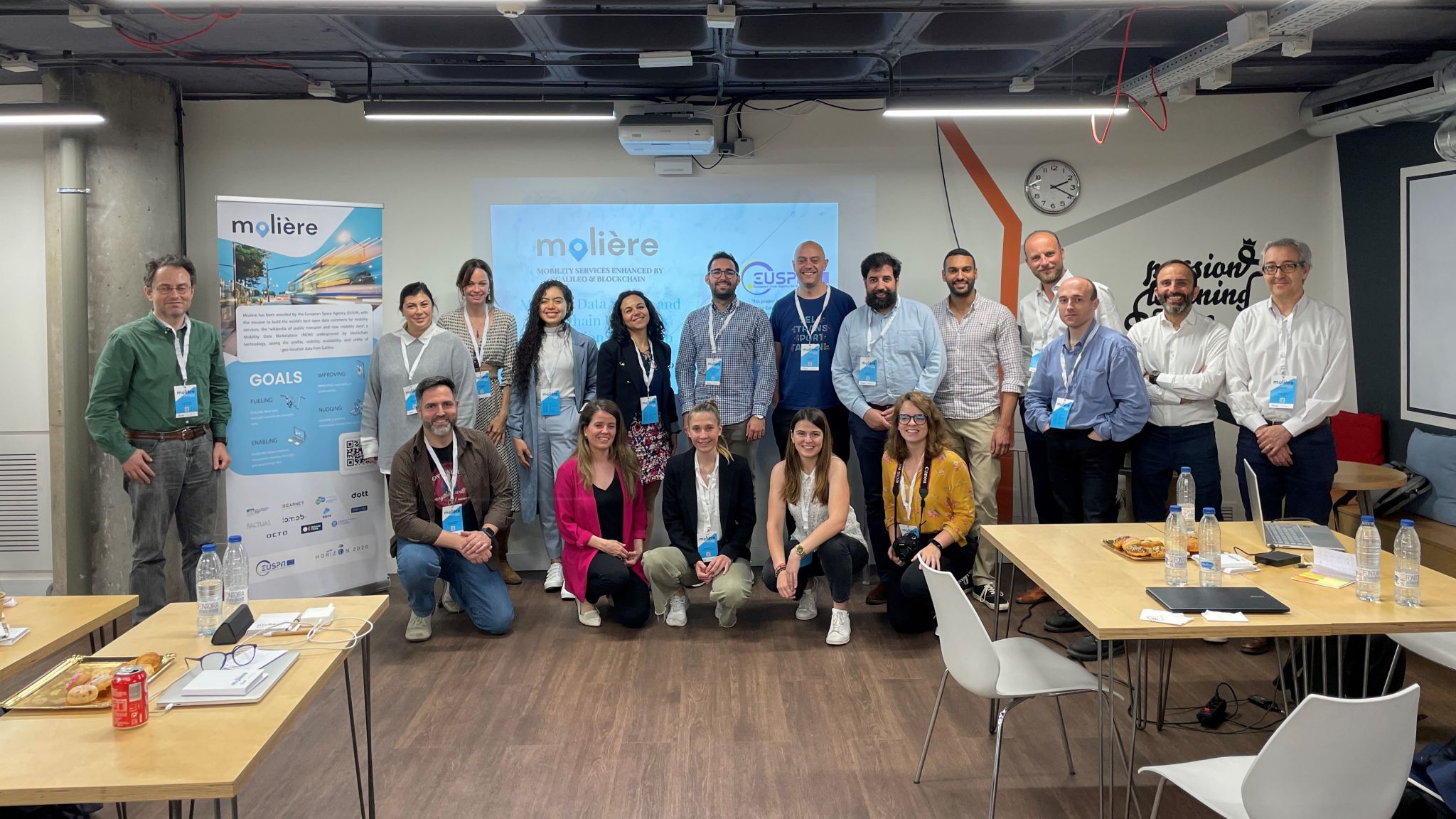In an effort to unravel the potential of combining mobility data and blockchain technology, industry experts and enthusiasts were gathered for an engaging workshop titled “Mobility Data Spaces & Blockchain Use Cases” within our Molière project, hosted in Madrid on the 25th of May.
The event served as a follow-up to a successful online session that took place a few weeks prior. From there, it aimed to delve deeper into the realms of mobility data governance and the transformative power of blockchain, so that a new set of use cases for the Molière technology could be developed.
The foundations of the project were initially presented. Galileo, Europe’s Global Navigation Satellite System, was explained to play a pivotal role in laying a solid base for the project and any mobility services. With its accuracy and reliable geolocation data, Galileo emerged as a key enabler for unlocking the full potential of mobility data and its integration with blockchain technology, another key aspect of Molière.
The in-person co-creation workshop achieved several key objectives. First and foremost, the collaborative development of real use cases for the Molière Mobility Data Marketplace (MDM). By leveraging the potential of Galileo along with other cutting-edge technologies, participants were poised to create tangible and impactful applications that address the challenges and opportunities in the mobility sector.
The gathering aimed to push boundaries, challenge traditional approaches, and carve out a path toward smarter, more connected mobility solutions. The new use cases ideation session allowed the invitees to discuss new potential uses for Molière’s developed product and technologies as tested in the use cases, proving the extended capabilities of such tools within the realm of future mobility. These were presented afterwards by each of the participating groups to the rest of the invitees.
An evaluation tool was been developed to assess the viability of various use cases developed based on specific criteria by considering the following factors:
- Legal Considerations: This criterion examines whether there are any legal barriers or restrictions that could impede the implementation of the use case. It assesses the compatibility of the proposed solution with existing regulations and identifies any potential legal challenges that need to be addressed.
- Technical Feasibility: The technical aspect evaluates whether the necessary foundational technology for the use case is readily available or if new technology is required. This criterion ensures that the proposed solution aligns with the current technological landscape and can be effectively implemented.
- Commercial Viability: The commercial criterion assesses the market demand for the use case and the willingness of mobility stakeholders to invest in it. It considers whether there is an existing need in the market that the use case addresses and evaluates its alignment with the strategic objectives of stakeholders, such as the 2030 Agenda.
- Stakeholder Engagement: This criterion evaluates whether the appropriate stakeholders, including data providers and technology developers, are involved in the use case. It emphasizes the importance of collaboration and ensuring that the right expertise and resources are engaged for successful implementation.
- Scalability and Impact: The final criterion assesses the scalability and potential impact of the use case. It considers whether the solution addresses local or specific needs of a particular population segment, or if it has the potential to solve broader geographical needs. This criterion highlights the importance of identifying solutions that have a significant and far-reaching impact.
After the presentation of 12 brand new use cases as brainstormed by the different teams of experts, accounting various backgrounds to have a wide overview of all potential considerations that needed to be made, these were evaluated following the prior criteria in a lively and collaborative discussion.
See the summary presentation and results here!
Beyond the in-person contributions and discussions, the workshop provided a platform for networking and collaboration among industry experts. Participants had the opportunity to connect with like-minded professionals, exchanging insights, and create new community within the mobility industry. This collaborative environment enabled the exploration and formulation of best practices that can propel the sector forward, which will be key to continue working on the project and improve the future of transportation.



